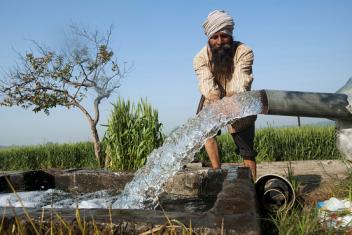Electricity consumption by farmers is growing, but the state is doing nothing to review subsidies
A slew of new extra-budgetary taxes has outraged Punjab, leading to state-wide protests. The ruling Shiromani Akali Dal (SAD) sees no other way of bridging the state's fiscal deficit and staggering debt burden of Rs 69,000 crore (even after a partial loan waiver). Despite pressure from its alliance partner, the BJP, it refuses to address the most significant cause of Punjab's economic distress: the ballooning power subsidy. This is precisely the issue that cost former state Finance minister Manpreet Badal his job and forced him out of the SAD.
The Punjab story – a power subsidy burden estimated at Rs 5,784 crore (2012-13) and annual debt servicing of Rs 5,000 crore - is being repeated in state after state throughout the country. As the agricultural sector's demand for power increases and electricity tariffs remain static, state governments are feeling the pinch.
Increasing energy consumption by farmers, in the form of power and high speed diesel, is seen as a sign of “progress”. Power consumption by agriculture stood at 120,209 gigawatt hours in 2009-10, which represents an increase of 10 per cent over the previous year and 50 percent in five years! Interestingly, the increase in power consumption by agriculture is higher than the overall increase in grain production.
It's not just a question of finances. Overdrawing by Haryana is said to have led to the massive grid collapses last month. It seems likely that the sharp spike in demand for power by farmers, thanks to a deficient monsoon, tripped the grid. Deficient rainfall increased farmers' dependence on groundwater to rescue their crops. Naturally, power consumption went up, with farmers running their tubewells for longer periods and vacuuming water from greater depths.
All across the country, low horsepower centrifugal pumps are no longer adequate to meet water demand and have been replaced by high horsepower, power-guzzling submersibles. Consequently, demand for power peaks during the kharif season, when massive inputs of water are required for the paddy crop. In Punjab, it has been 25 per cent higher than normal this year and will cost Rs 1,500 crore extra.
The central government refuses to face up to the problem. The EGoM on drought, for instance, came up with still more subsidies to alleviate farmers' distress, like concessions on diesel and seeds, but did not take up the three critical issues of power availability, power subsidy and the consequent exhaustion of ground water.
Almost all the investment in groundwater irrigation is in the private sector and therefore unregulated and unmonitored. In a very few areas, permission must be sought before boring, but for the most part, it is indiscriminate. The farmer does not hesitate to sink a bore on his land if he can afford the initial capital investment, because the cost of running the submersible is low. Power to the farm sector is heavily subsidized and state governments tend to write off power dues from time to time in the name of farmer welfare.
In several states, farmers get free power. For instance, in Odisha it is free. In Punjab in 2010-11, the farmer paid 65 paise per kilo-watt hour (kwh) as opposed to Rs 4.31 per kwh for industry. In India, overall, farmers paid Rs 1.23 per kwh, while industry paid nearly four times as much.
Studies have shown that power consumption per pump has gone up; this is natural as the trend is towards submersibles. Also, it is highest during kharif season, as the bulk of rice is grown during the monsoon. A highly water-intensive crop, a single kilo of basmati rice can take anything from 3,000 to 7,000 litres of water, depending on the variety. As a result, Punjab “exports” over 21 billion cubic metres of water every year, in the form of agricultural commodities.
With increasing demand and static or zero farm tariffs, state power distribution companies suffer losses. According to a 2011 planning commission report, net losses in the five years between 2006-2011 was Rs 82,000 cr. The Union government is now working on a bailout package for the state power distribution companies.
The Ministry of Agriculture has consistently maintained that power supply to the farm sector is not its problem. Likewise, falling water tables are the province of the ministry of Water Resources. But without a clear projection of the farmers' power requirements ahead of each crop season, planning for and allocating power to the states becomes ad hoc. An extra 300 MW was allocated to Punjab, Haryana and Rajasthan for agricultural operations this year, but it was clearly not enough.
Adding to the energy subsidy, the EGoM on drought has instituted an additional 50 per cent subsidy on diesel for farmers. Thus, instead of looking at ways of making the farm sector more energy efficient and reducing its dependence on power, the Union government's policy is geared towards increasing energy consumption through irrigation and mechanisation. In short, it is subsidy-centric and therefore, as Punjab has discovered, unsustainable.

